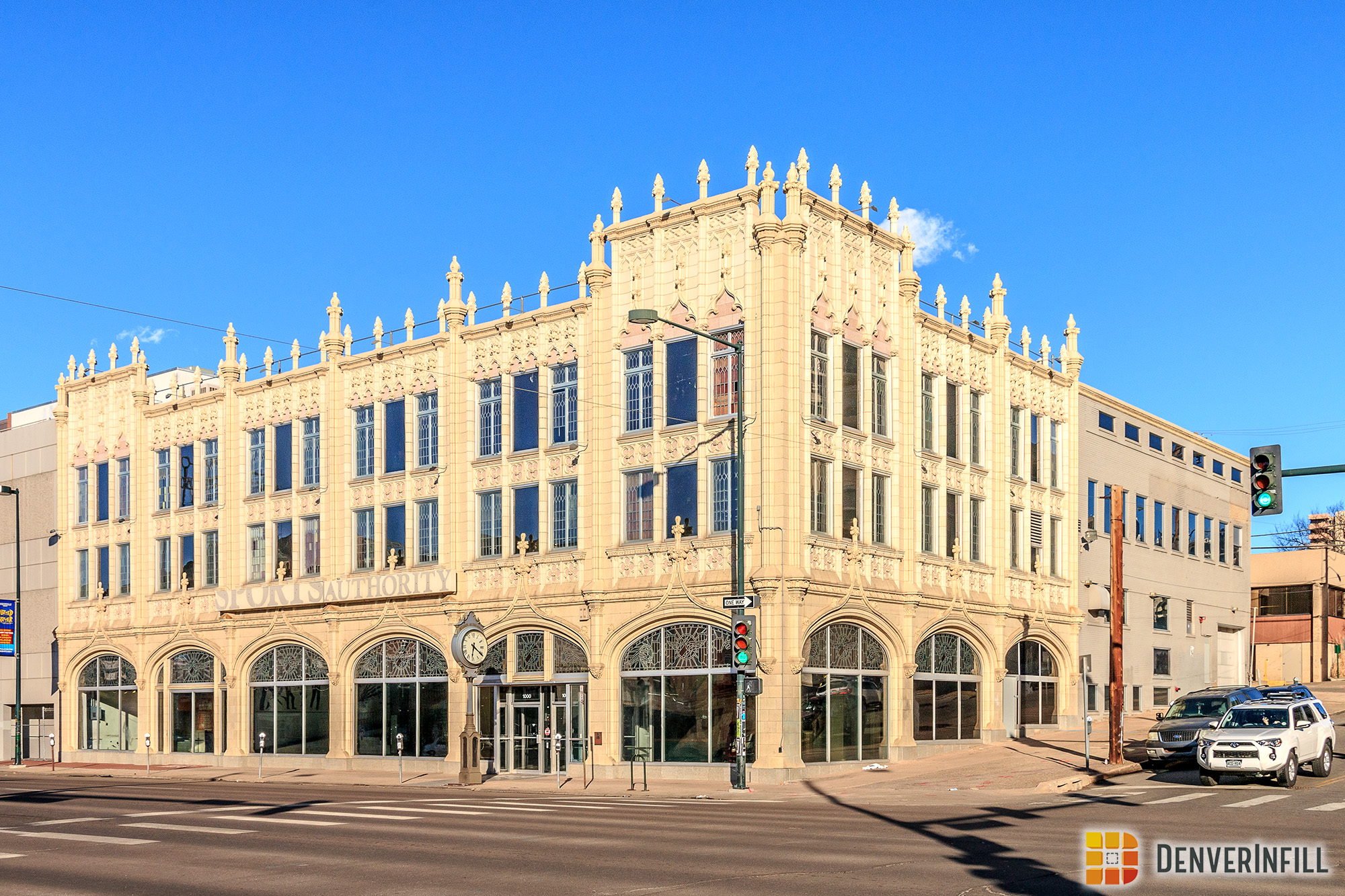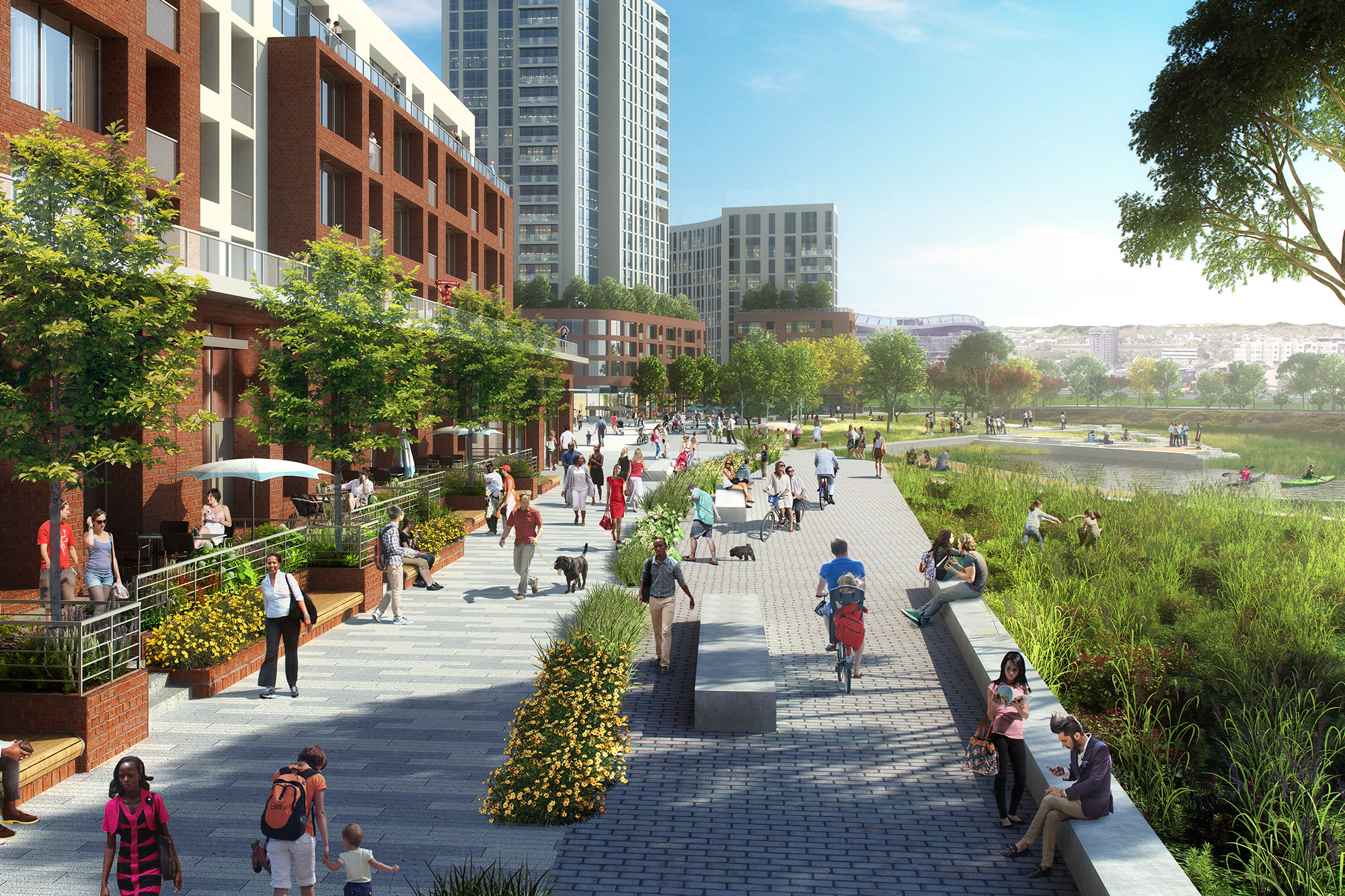In the spirit of the day, and in honor of Denver turning 150 years old this month, I’m thankful that I live in the city of Denver and that Denver is such a great city in which to live.
I’m thankful that Denver is an optimistic, progressive city. Whether it is due to our perpetually sunny skies and gorgeous mountain backdrop, or our inferiority complex about not being good enough of a city (probably a combination of both), Denver constantly strives to become a better place. We’ve been blessed with strong mayors who have run relatively clean and effective administrations, city councils mostly free from scandal and corruption and almost always in agreement with the mayor, and city employees who generally take pride in doing the people’s work. And then there’s the Denver voter.
In the twenty-three years I’ve lived in this city, Denver voters have enthusiastically voted to approve: a new airport, football stadium, baseball stadium, convention center, central library, opera house, concert hall, performing arts theater, art museum expansion, zoo expansion, natural history museum expansion, stock show complex expansion, courthouse and jail complex, rail transit system, municipal office building, convention center expansion, convention center hotel, downtown amusement park, hospital expansion, and bond issues to support a myriad of improvements to parks, streets, libraries, playgrounds, rec centers, police and fire stations, schools—you name it.
There are many cities out there that would be thrilled to have accomplished even a quarter of that list in the same amount of time. For many cities “back east,” here’s how it typically works:
1. City Facility X (airport, stadium, convention center… whatever) is in dire need of improvement or replacement.
2. Ten years later, City Facility X is still in dire need of improvement or replacement.
3. Five years later, city asks voters to approve funding to improve/replace City Facility X. Voters reject proposal.
4. City moves forward with City Facility X project anyway. City is sued over project.
5. Two years later, city wins court battle. Citizens place referendum on ballot to block project. Voters approve referendum.
6. Mayor caught in scandal over illegal scheme to fund City Facility X. Mayor and half of city council resigns.
7. Three years later, city asks voters to approve funding to improve/replace City Facility X. Voters reject proposal.
8. Two years later, city scrapes together funding for project without needing voter approval. Construction begins.
9. City Facility X completed two years behind schedule and 300% over budget.
10. One year later, city forced to close City Facility X due to faulty construction.
In contrast, this is how it usually goes in Denver:
1. City Facility X is in decent condition but not new and shiny anymore.
2. City asks voters to approve funding to improve/replace City Facility X. Voters overwhelmingly approve proposal.
3. Six months later, construction begins.
4. Project completed on time and on budget. 100,000 citizens join mayor and city council at grand-opening celebration.
5. City begins planning for Phase 2 of City Facility X project.
So, next time you’re feeling a little blue due to the state of the economy or over the cancellation of that Downtown skyscraper, take a moment to consider how good we’ve got it here. Denver’s certainly not perfect, but at least we make the effort and we do so with a collective ambition towards progress and goodwill. And for that, I am thankful.










Ken, well done! Both of your scenarios are true. I am also thankful to live here.
Right on, Ken! Well said!
And tonight they're lighting the lights. Something which, for me, has always sort of personified all that is great about Denver.
Likewise Ken. Thanks for that post. I'm also thankful that we're still not uptight and that we can say things like Happy Thanksgiving instead of Happy Holidays. Our laid back attitudes will open up all kinds of doors for this city.
Thank You Ken, well said.
I was born and raised in Denver and I am very proud of my hometown. Regardless of size Denver is a great City.
The opening of DIA was delayed 3 or 4 times and it cost 4-5 times more than it was originally slated to cost. I encourage everyone to be proud of Denver. But that pride should be genuine and not arise from ignorance.
Who is demonstrating any ignorance here, Allen?
I'm sure you're aware that the primary reason for DIA's schedule delay, and much of the budget overrun, was due to the automated baggage system that United Airlines insisted upon but that the city opposed.
Nevertheless, my point was that in Denver, we have a pretty good (not perfect) record when it comes to civic projects, and my larger point was that Denver citizens have demonstrated over 150 years a collective ambition toward progress and forward thinking–DIA being a prime example–for which I am thankful.
Do you think Denver voters will follow through with the same kind of enthusiasm if the FasTracks program needs to request more money? I've already heard that they are considering cutting a rail line to Boulder because, they explain, Boulder commuters are "too attached to using the bus."
Um, of course they are attached to the bus, it's the only transit to Denver avaiable. But I've heard from multiple sources that they want to cancel the line that would go through Westminster, Broomfield, Louisville, Boulder an Longmont.
Hopefully the drop in construction material costs due to the recession will put this budget overrun back in the green, OR one of or two Democratic senators will will request a nice econoic-stimulus earmark for Denver's RTD.
I'm quite aware of the baggage system issues as it was something I studied for a software engineering class. Having studied
it, I know that it was a large factor in the problems the project incurred. Over time though politicians have managed to
turn it into a scapegoat. Even if the system had caused all of the delays and extra costs, which it quite clearly did not,
at best it would mean those in charge of the project royally screwed up by allowing it to be included.
The baggage system was a major factor in the delay of the opening from the of 1993 to March 1995. The problem is that once that system was officially behind schedule, it became the catch-all bucket for delay blame. Beside the higher level issue of city leaders and project managers allowing for it to come into play too late into the project and aside from the higher level issue of the city officials and project leaders letting their hubris take over and assigning the world's most largest complex baggage system ever attempted a timeschedule that no engineer would give it, the baggage project took the flak for other delays that would have existed had it not been there. There were many construction issues steming from over ambitious schedules, late design changes, issues with getting enough supplies of materials and others that caused other aspects of the project to be delayed. The baggage system screwed things up but it was far from being the only source of delays in the project.
DIA's initial construct cost @ $5 billion. The original projected cost was @$2.75 billion (even less if you go back to Pena's irrationally low estimates… but let's be kind and not put those into play). Cost overruns from the bagggase system only account for 1/4, $500 million, of the $2.25 billion in cost overruns in the project. Most of the cost overruns were due to things other than the baggage system.
The end result is a project that was not completed on time not on budget. That doesn't change that Denver's a great place to live. It doesn't change that When compared to older cities out east, Denver is clearly better managed. And in the last 25 years Denver's carried out a lot of big projects and for the most part done a good job with them. Nevertheless, it hasn't been perfect. We just need to keep in mind the mistakes that have been made to help avoid doing them again the future.
Allen, of course there were other problems with DIA, and of course Denver is not perfect, which is why I said that "this is usually how it goes in Denver" and that "Denver is certainly not perfect" and since you seem to agree that Denver tends to be better managed than other cities and that we've generally done a good job with our projects… then thank you for your post. We certainly want to learn from our mistakes in the past.
I think that the rail line to Boulder and Longmont probably is redundant with the bus lanes along Hwy 36. If any cuts to the FasTrax rail lines are necessary, I think it makes sense to end the northwest line in Westminster. The Boulder/Longmont extension could always be built in the future. Also, Boulder should build its own trolley car system.
Corey